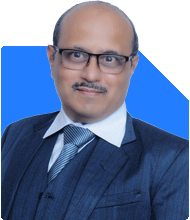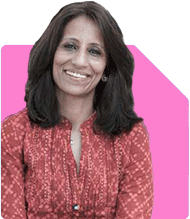53 and Ready to Retire: How Much Will I Need to Live Comfortably Until 85?
Ramalingam Kalirajan |10878 Answers |Ask -Follow
Mutual Funds, Financial Planning Expert - Answered on Oct 21, 2024
He has an MBA in finance from the University of Madras and is a certified financial planner.
He is the director and chief financial planner at Holistic Investment, a Chennai-based firm that offers financial planning and wealth management advice.... more
.jpg)
Hello, I m 53 and plan to retire. I have 5cr in FD With 70k monthly rental No loan. Please help me to know what amounts should I need till 85 years
Key Retirement Factors to Consider
Before determining how much you will need, several factors need to be evaluated:
Monthly Expenses: We need to know your current monthly expenses. This will give a clearer picture of how much you need each month to maintain your lifestyle.
Inflation: Inflation erodes the value of money over time. A loaf of bread that costs Rs. 50 today could cost Rs. 150 in 20 years. Inflation typically ranges between 6-8% in India.
Life Expectancy: You want to ensure your funds last till the age of 85. This gives you a 32-year retirement horizon. However, it's always good to plan a few years beyond this as a safety net.
Healthcare Costs: Medical expenses typically increase as we age. Ensuring sufficient coverage or savings for unexpected healthcare costs is vital.
Other Goals: Do you have any other financial goals during retirement, such as travel, supporting family members, or pursuing hobbies? These need to be factored into your financial plan.
Understanding these aspects will help tailor a plan that ensures your financial security.
Sustainable Withdrawal Strategy
You currently have Rs. 5 crore in fixed deposits. While fixed deposits provide safety, they might not be enough for the long term when inflation is considered. Over time, the interest from these deposits may not keep up with inflation. You will need a diversified strategy to ensure your money lasts.
Safe Withdrawal Rate: A commonly suggested safe withdrawal rate is 4% per year. This allows your principal to last longer while generating a steady income.
Diversifying Beyond FDs: While Rs. 5 crore in fixed deposits is safe, it’s important to diversify. The returns from FDs alone may not beat inflation. We’ll explore other options like mutual funds, which can offer better long-term growth.
Monthly Rental Income as a Supplement
Your monthly rental income of Rs. 70,000 is a great source of passive income. It reduces the pressure on your investments. Assuming rental income grows by 5-6% per year, this can be a reliable part of your retirement plan. However, you should not rely solely on this income as rentals may fluctuate or even stop.
Rental Growth: Over time, rental income typically grows, but it may also be affected by factors like market conditions and property maintenance.
Diversification of Income: It’s essential to have other income sources, such as from your investments, to support your lifestyle.
Adjusting for Inflation
The impact of inflation on your retirement savings cannot be underestimated. If your current monthly expenses are Rs. 1 lakh, in 20 years, they could rise to Rs. 3-4 lakh due to inflation. Therefore, your investments need to grow at a rate higher than inflation to maintain your purchasing power.
Role of Equities: A portion of your retirement corpus should be invested in equity mutual funds. Equity has the potential to beat inflation over the long term, unlike fixed deposits, which have lower returns.
Balanced Approach: While equity mutual funds can help combat inflation, having too much exposure to equities can be risky during retirement. A balanced approach, with some allocation to equity and some to safer debt mutual funds, can provide growth while maintaining stability.
Tax Implications on Investments
It’s important to consider the tax implications of your investments.
Fixed Deposits: The interest earned on fixed deposits is fully taxable as per your income tax slab. This can significantly reduce your effective returns, especially if you're in a higher tax bracket.
Equity Mutual Funds: Long-term capital gains (LTCG) above Rs. 1.25 lakh from equity mutual funds are taxed at 12.5%. Short-term capital gains (STCG) are taxed at 20%. Equity mutual funds are more tax-efficient than fixed deposits.
Debt Mutual Funds: Debt funds are taxed based on your income tax slab, similar to FDs. However, the benefit of indexation makes debt funds slightly more tax-efficient over the long term.
Creating a Balanced Retirement Portfolio
Given your goal of ensuring financial security till the age of 85, a balanced retirement portfolio is essential. Here’s how you could structure your investments:
Equity Mutual Funds for Growth: A portion of your Rs. 5 crore can be allocated to equity mutual funds. Equity offers better long-term returns, and with a time horizon of 30+ years, you can afford to take some equity exposure. This will help your portfolio grow and combat inflation.
Debt Mutual Funds for Stability: Debt mutual funds provide stable returns with lower risk. They can replace fixed deposits in some parts of your portfolio, offering tax efficiency and better returns.
Systematic Withdrawal Plan (SWP): Instead of withdrawing lump sums, you can set up a Systematic Withdrawal Plan (SWP) from your mutual fund investments. This will provide you with regular monthly income and is more tax-efficient than withdrawing from FDs.
Emergency Fund: Keep at least 1-2 years’ worth of expenses in a liquid or ultra-short-term debt fund for emergencies. This ensures liquidity in case of unforeseen expenses.
Health Insurance: Ensure you have adequate health insurance. Medical expenses can rise sharply with age, and having a good insurance plan will protect your savings from being depleted due to healthcare costs.
How Much Do You Need for Retirement?
To calculate the exact amount you’ll need till the age of 85, we need to estimate your monthly expenses, inflation, and expected returns on your investments. However, based on your existing Rs. 5 crore in fixed deposits and Rs. 70,000 in rental income, you’re in a good position to retire comfortably.
If your monthly expenses are around Rs. 1-1.5 lakh today, with a safe withdrawal rate of 4%, your Rs. 5 crore can generate Rs. 16-20 lakh annually. This, combined with your rental income, should cover your expenses for the foreseeable future. However, to ensure this amount lasts, you should diversify and invest in mutual funds to keep up with inflation.
Final Insights
You are financially well-positioned for retirement with Rs. 5 crore in fixed deposits and a steady Rs. 70,000 monthly rental income. However, to ensure your money lasts for the next 30+ years, you should:
Diversify your investments into equity and debt mutual funds to beat inflation.
Use systematic withdrawal plans (SWP) for a steady, tax-efficient monthly income.
Keep a portion in liquid funds for emergencies.
Ensure you have adequate health insurance to cover rising healthcare costs.
By following this approach, you can enjoy a financially secure retirement while ensuring your funds last till the age of 85 and beyond.
Best Regards,
K. Ramalingam, MBA, CFP,
Chief Financial Planner,
www.holisticinvestment.in
https://www.youtube.com/@HolisticInvestment
To estimate the corpus required at the age of 85, we would need to consider inflation, returns on your FD and other investments, and your future healthcare needs. However, with the assets and income sources mentioned, it appears that your current financial setup should comfortably support your retirement until 85, assuming proper management and adjustments to inflation.
For a detailed, customised analysis based on your exact needs and financial goals, I recommend speaking with a Certified Financial Planner (CFP) who can tailor the strategy specifically for you.
Best Regards,
K. Ramalingam, MBA, CFP,
Chief Financial Planner
www.holisticinvestment.in
https://www.youtube.com/@HolisticInvestment
You may like to see similar questions and answers below
Ramalingam Kalirajan |10878 Answers |Ask -Follow
Mutual Funds, Financial Planning Expert - Answered on May 17, 2024
Ramalingam Kalirajan |10878 Answers |Ask -Follow
Mutual Funds, Financial Planning Expert - Answered on Jul 27, 2024
Ramalingam Kalirajan |10878 Answers |Ask -Follow
Mutual Funds, Financial Planning Expert - Answered on Sep 20, 2024
Ramalingam Kalirajan |10878 Answers |Ask -Follow
Mutual Funds, Financial Planning Expert - Answered on Apr 23, 2025
Nitin Narkhede | Answer |Ask -Follow
MF, PF Expert - Answered on Jun 01, 2025
Dr Nagarajan J S K |2577 Answers |Ask -Follow
NEET, Medical, Pharmacy Careers - Answered on Dec 10, 2025
Mayank Chandel |2570 Answers |Ask -Follow
IIT-JEE, NEET-UG, SAT, CLAT, CA, CS Exam Expert - Answered on Dec 10, 2025
Samraat Jadhav |2503 Answers |Ask -Follow
Stock Market Expert - Answered on Dec 10, 2025
Radheshyam Zanwar |6741 Answers |Ask -Follow
MHT-CET, IIT-JEE, NEET-UG Expert - Answered on Dec 10, 2025
Ramalingam Kalirajan |10878 Answers |Ask -Follow
Mutual Funds, Financial Planning Expert - Answered on Dec 10, 2025
Ramalingam Kalirajan |10878 Answers |Ask -Follow
Mutual Funds, Financial Planning Expert - Answered on Dec 10, 2025
Samraat Jadhav |2503 Answers |Ask -Follow
Stock Market Expert - Answered on Dec 10, 2025
Samraat Jadhav |2503 Answers |Ask -Follow
Stock Market Expert - Answered on Dec 10, 2025
Samraat Jadhav |2503 Answers |Ask -Follow
Stock Market Expert - Answered on Dec 10, 2025
Shalini Singh |180 Answers |Ask -Follow
Dating Coach - Answered on Dec 10, 2025



























